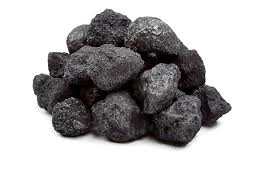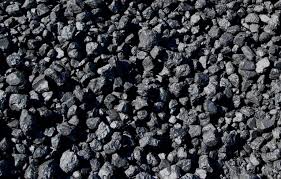
Petroleum Coke, commonly known as Petcoke, is a carbon-rich solid material produced as a byproduct of oil refining processes. Due to its high calorific value, low moisture content, and cost-efficiency, it has become a crucial fuel in several industrial sectors, including power generation, cement manufacturing, and metallurgy.
Petroleum Coke is produced during the coking process, where the heavy residual oils from crude oil refining are thermally decomposed. The result is a hard, black, coal-like substance composed primarily of carbon (80–95%), along with small amounts of hydrogen, sulfur, nitrogen, and heavy metals.
| Property | Description |
|---|---|
| Appearance | Black, granular or solid, coal-like material |
| Carbon Content | 80% – 95% |
| Moisture Content | Low (typically <1%) |
| Sulfur Content | Ranges from <1% to >6% (depends on crude source) |
| Volatile Matter | 5% – 15% |
| Ash Content | 0.1% – 3% |
| Heating Value | ~7,000 – 8,500 kcal/kg (29 – 36 MJ/kg) |
| Hardness | Very hard, non-volatile |

Petroleum Coke is classified into different types based on its production method and physical characteristics:
| Type | Description |
|---|---|
| Green Petcoke | Uncalcined petcoke directly from coker units; high in volatile matter and moisture. |
| Calcined Petcoke | Green petcoke that has been heat-treated to remove volatiles and moisture; used in aluminum and steel industries. |
| Needle Coke | High-quality form used in the production of graphite electrodes for electric arc furnaces. |
| Shot Coke | Spherical-shaped, hard petcoke with limited commercial use. |
| Sponge Coke | Porous structure, commonly used in fuel applications. |
Petroleum Coke is used in various industrial sectors due to its high calorific value, carbon content, and relatively low cost:
Cement Industry: As a primary fuel for kilns due to its consistent combustion and affordability.
Power Plants: Used as a fuel in coal-fired power plants, often blended with coal.
Lime Kilns and Brick Ovens: Utilized in energy-intensive heating operations.
Aluminum Industry: Calcined Petcoke is a key raw material in the production of anodes used in aluminum smelting.
Steel and Metallurgy: Used in electric arc furnaces and foundries as a recarburizing agent.
Graphite Production: Needle coke is used to make graphite electrodes.
⚠️ Environmental Note: High-sulfur petcoke must meet environmental standards due to SO₂ and particulate emissions during combustion.
Petcoke’s high carbon and sulfur content make it a pollutant-intensive fuel. Upon combustion, it can emit:
Sulfur Oxides (SOx)
Nitrogen Oxides (NOx)
Fine Particulate Matter (PM2.5 & PM10)
Due to these emissions, many regions regulate the sulfur content and ash levels in petcoke, especially for large-scale combustion. Environmental agencies often require:
Desulfurization Equipment
Particulate Control Systems
Combustion Efficiency Monitoring

Petroleum coke is produced wherever there are large-scale crude oil refineries with delayed coking units. Major producers include:
United States – One of the largest producers and exporters.
China – Extensive use in domestic industries.
India – Heavy consumer in cement and aluminum industries.
Russia – Known for high-carbon and low-ash petcoke.
Petcoke’s pricing and demand are influenced by:
Global Oil Refining Capacity
Crude Oil Prices
Environmental Regulations
Aluminum and Steel Production Levels
Coal Market Substitution Trends
In recent years, the petcoke market has experienced rising demand in emerging economies due to its cost-effectiveness compared to coal.
Petroleum Coke (Petcoke) plays a critical role in energy-intensive and carbon-focused industries. Whether used as a fuel or an industrial carbon source, its unique combination of affordability, energy density, and industrial relevance makes it indispensable to sectors such as power generation, cement production, and metal refining. As environmental regulations evolve, producers and end-users must adapt to stricter quality standards and emissions controls to ensure sustainability and compliance in the global energy market.